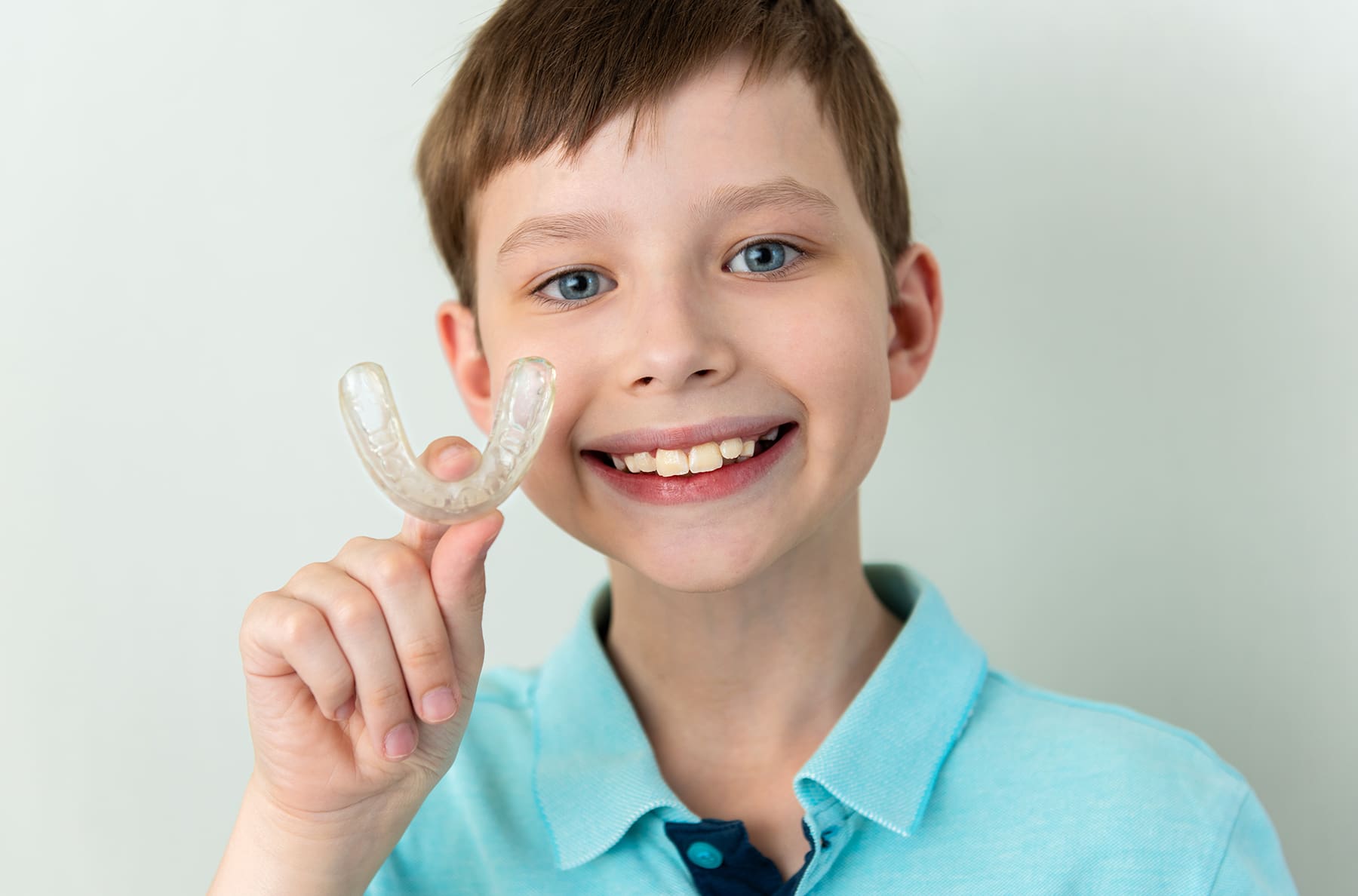Reviewed By Dr. Jodi Kuhn
Reading time: 4 minutes
If your child has crooked teeth, a severe bite issue, or other orthodontic concerns, choosing between Invisalign and braces can feel like a big decision.
Both options are excellent treatment choices that lead to a straighter smile, but there are a few key differences.
In this blog, you will learn about the pros and cons of braces and Invisalign to help you make an informed decision.
Youth Dentistry & Orthodontics offers orthodontic treatment in Denver, Aurora, Hampden and Thornton, CO.
Table of Contents
Key Takeaway
Invisalign and braces each offer unique benefits for kids. Invisalign provides a discreet, removable option ideal for minor alignment issues, while braces are a reliable choice for correcting complex dental concerns.
Key Differences Between Invisalign and Braces
Here’s a quick overview comparing these two orthodontic treatment options:
| Feature | Invisalign | Braces |
| Appearance | Nearly invisible aligner trays | Visible metal brackets or ceramic braces |
| Comfort | Smooth plastic aligners, no sharp edges | Can cause minor irritation from brackets |
| Removability | Removable for eating and cleaning | Fixed to teeth with brackets and wires |
| Dietary Restrictions | None! Aligners are removed to eat and drink. | Avoid sticky foods and chewy foods |
| Oral Hygiene | Easy to brush and floss | Cleaning around brackets takes extra care |
| Treatment Duration | Often takes 6–18 months for mild to moderate alignment issues | Can take 18-36 months for severe misalignment. |
| Cost | Cost varies depending on treatment | Cost varies depending on treatment |
| Maintenance | Regular aligner changes, fewer office visits | Monthly visits to the orthodontist for adjustments |
Learn more about the topic: The Importance of Early Orthodontic Treatment
Invisalign for Kids: A Discreet Option
Invisalign® for teens uses clear, plastic aligner trays to gradually move teeth into alignment. This alternative to braces is popular among teens who prefer a less noticeable treatment option..
Benefits of Invisalign for kids
- Discreet and comfortable: Transparent aligners are nearly invisible and cause no irritation.
- No food restrictions: The aligners are removed to eat and drink, so there are no food restrictions.
- Improved oral hygiene: Aligners are removable, which makes it easier to clean teeth and maintain a good oral hygiene routine.
Drawbacks of Invisalign
- Not ideal for severe bite issues: Invisalign is less effective for severe misalignment or dental issues.
- Requires discipline: The aligners must be worn for 20–22 hours a day, which can be a challenge for some.
- Higher cost: Invisalign can be an expensive option compared to traditional braces.
Braces for Kids: A Classic, Reliable Choice
Traditional dental braces are still one of the most effective treatment options for kids, especially for severe misalignment or bite conditions.
Braces use metal brackets and archwires to apply constant pressure to teeth, gradually aligning them.
Benefits of Braces for Kids:
- Works for all dental issues: Braces can handle complex orthodontic conditions, including severe bite issues.
- No discipline needed: Since braces are fixed, there’s no risk of forgetting to wear them.
- Customizable colors: Kids love choosing colored bands for a personalized look.
Drawbacks of Braces:
- Visible appearance: Traditional metal braces are noticeable, although ceramic braces and lingual braces are more discreet.
- Food restrictions: Must avoid hard, sticky, or chewy foods that can damage the brackets or wires.
- Oral hygiene challenges: Cleaning around brackets and wires takes extra effort and care.
Learn more about orthodontic treatment here: What Age Should Kids Get Braces?
Tips for Parents
- Encourage proper oral hygiene: Oral hygiene with braces takes a bit more effort, but having the right tools can make the job easier. Try dental flossers or a water flosser instead of traditional floss. If your child has Invisalign, they should brush their aligners before placing them back in their mouth. Ideally, they should give their teeth a quick brush after every meal, before putting the aligners back in.
- Discuss compliance: Remind your child of the importance of wearing aligners for the recommended hours. If they are not eating or drinking, their aligners should be in.
- Schedule regular visits: Keep up with monthly visits for braces or check-ins for Invisalign.
Orthodontic Treatment in Denver, Aurora, Hampden and Thornton
At Youth Dentistry & Orthodontics, we offer a broad range of orthodontic treatment options, including traditional braces and Invisalign.
We accept Medicaid and provide flexible payment options to fit your family’s needs.
Call the location nearest you to schedule an appointment:
📍Denver Youth Dentistry and Orthodontics: 1400 Grove Street, Denver, CO 80204 | (303) 825-2295
📍Aurora Youth Dentistry and Orthodontics: 14251 E. 6th Avenue, Aurora, CO 80011 | (303) 343-3133
📍Thornton Youth Dentistry and Orthodontics: 550 E. Thornton Parkway, Suite 240A, Thornton, CO 80229 | (303) 280-8878
📍Hampden Youth Dentistry and Orthodontics: 7400 East Hampden Ave. Unit C1, Denver, CO 80231 | (720) 826-3694
FAQs
What age can kids start Invisalign?
Invisalign is typically suitable once the permanent teeth have erupted, usually around age 11–13. However, more is considered than just their age. The child must be responsible enough to keep track of their aligners and to wear them 20-22 hours a day.
Do orthodontists prefer braces or Invisalign?
It really depends on the patient’s needs. Traditional braces and Invisalign are both great options for treating misaligned teeth.


